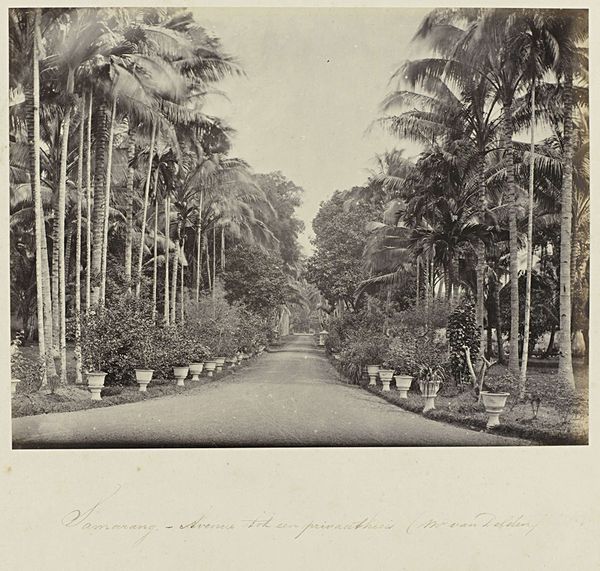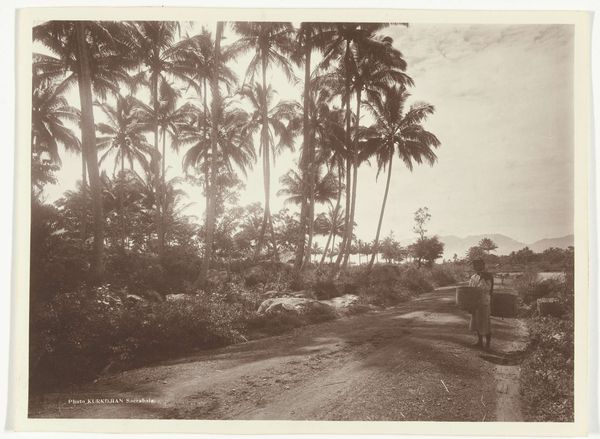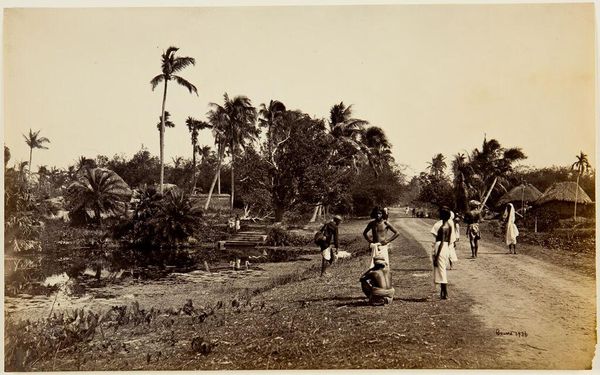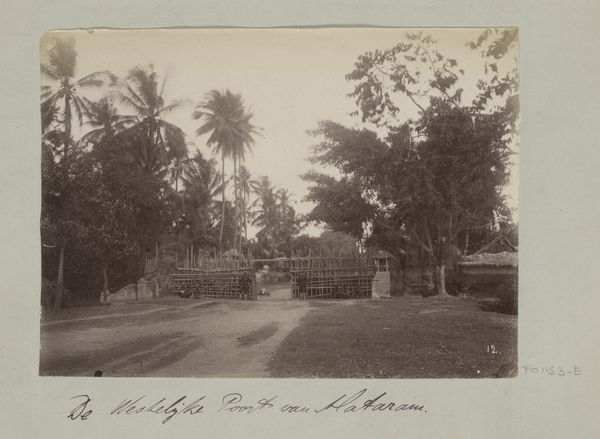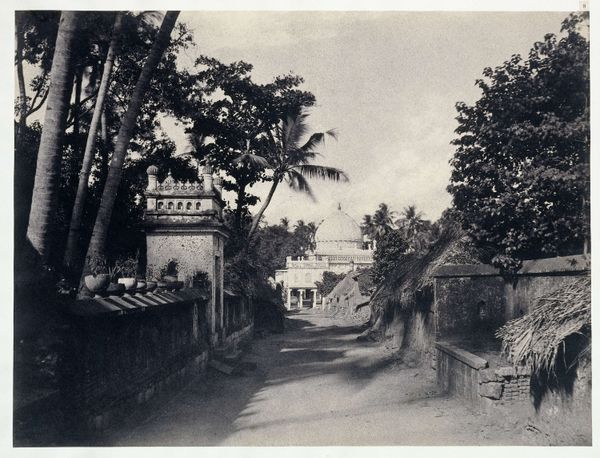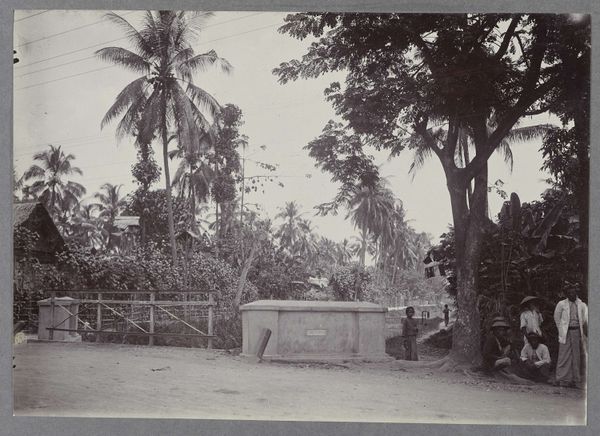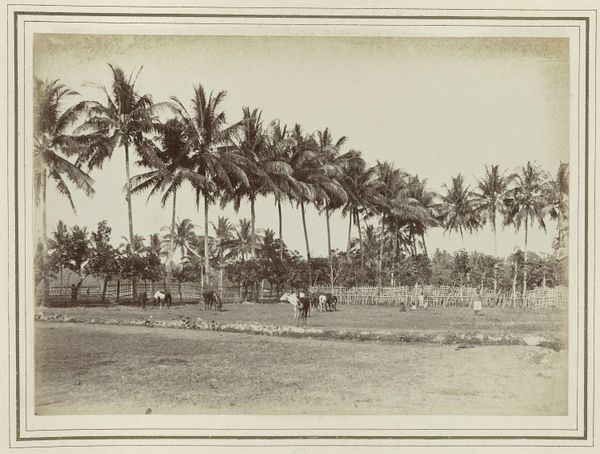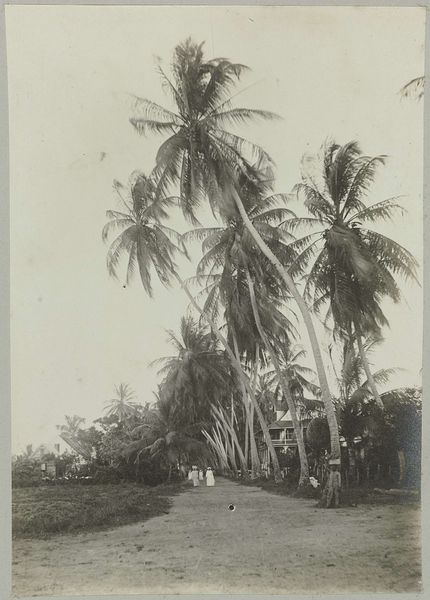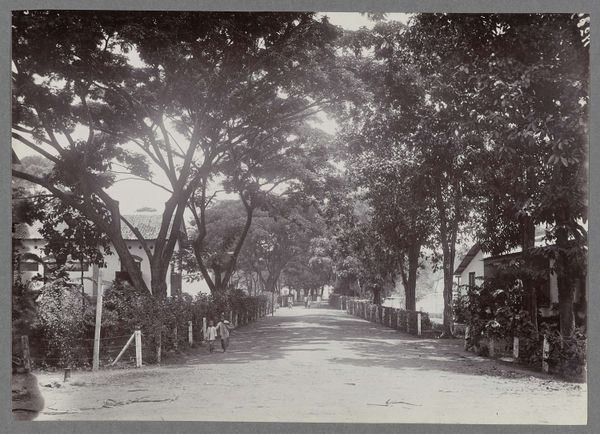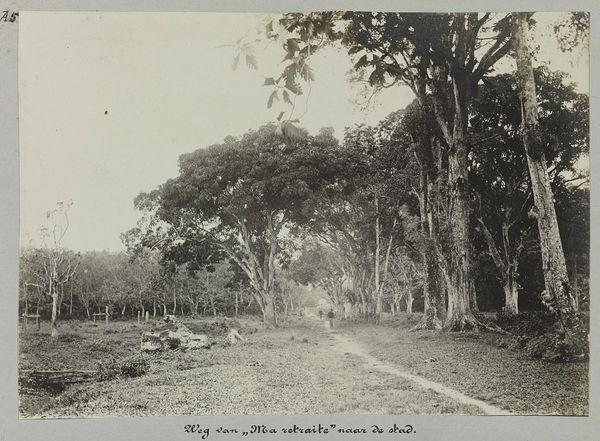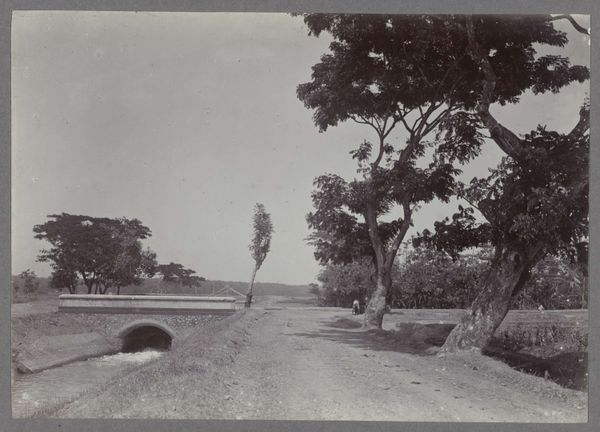
Straatgezicht in Payakumbuh met langs de kant van de weg een onbekend echtpaar met baby en Indonesische kinderverzorgster (destijds 'baboe' genoemd) en bediende 1891 - 1912
0:00
0:00
gelatin-silver-print, photography, gelatin-silver-print
#
gelatin-silver-print
#
landscape
#
photography
#
gelatin-silver-print
#
monochrome photography
Dimensions: height 204 mm, width 271 mm
Copyright: Rijks Museum: Open Domain
Curator: This gelatin silver print, taken sometime between 1891 and 1912, is titled "Straatgezicht in Payakumbuh met langs de kant van de weg een onbekend echtpaar met baby en Indonesische kinderverzorgster (destijds 'baboe' genoemd) en bediende", credited to Christiaan Benjamin Nieuwenhuis. Editor: It evokes a profound stillness, doesn't it? The muted tones and the formal composition create a sense of measured calm, like a captured memory. It's melancholic in a way, perhaps due to the distant figures, like ghosts in a faded dream. Curator: Indeed. Let's consider the materiality. Gelatin silver prints offered incredible tonal range, seen here in the detailed rendering of light on the trees and road. It’s fascinating how a chemical process like this allowed for the reproduction and, crucially, dissemination of colonial imagery. Think about how this impacted public perception of the region. Editor: And consider the baboe – the Indonesian caregiver. Placed at a spatial remove, but laden with symbolic weight, positioned as a secondary figure. What narrative do you read in her body language, her distance from the couple and child? It feels illustrative of power dynamics at play. Curator: Precisely. Photography became a tool, not just for documentation but also for social stratification. Nieuwenhuis was capturing more than just a street scene. He was producing an image that reinforced colonial hierarchies. Editor: The repeating pattern of the trees, mimicking each other on both sides of the path, does it suggest an idealized, manicured landscape that serves as a symbolic garden, reinforcing control and cultivation. It gives the picture almost the effect of a colonnade framing the subjects, drawing them back into the depths. Curator: You’re right. Even in what seems like a straightforward landscape, there’s this latent layer of societal imprinting made material. What we observe in the photo serves almost as material evidence of an unfair system. Editor: Absolutely. I’ll certainly view the photograph differently, reflecting on the loaded implications. Curator: It’s a powerful image to sit with. Let’s allow that to settle with our listeners as we transition to the next work.
Comments
No comments
Be the first to comment and join the conversation on the ultimate creative platform.
